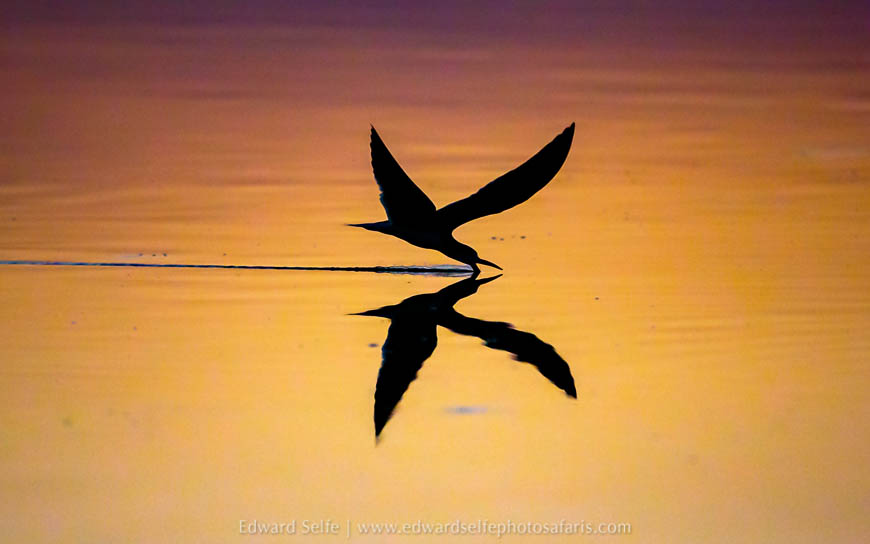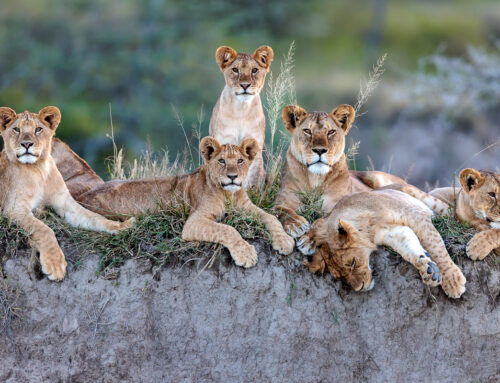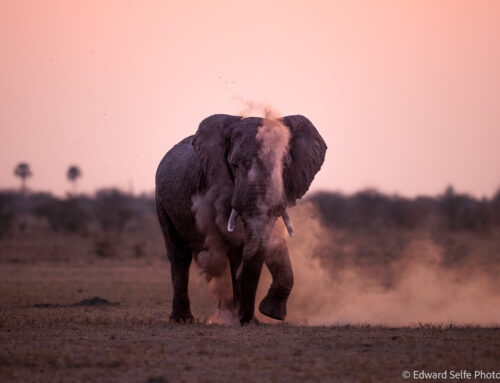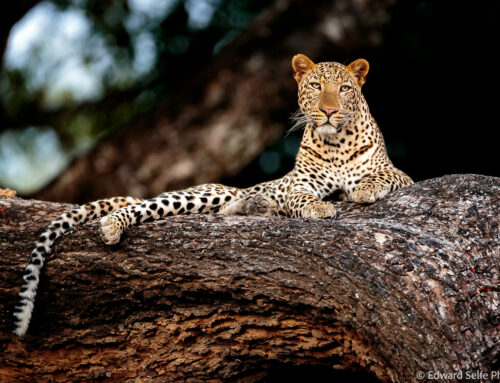African Skimmers are charismatic tern-like birds which live along the permanent rivers of sub-Saharan Africa. They are most noted for their unusual feeding technique which involves flying just above the river’s surface with the lower part of the bill dragging in the water.
The bill is highly sensitive and, when it detects a nearby fish, the bill is snapped shut and the fish lifted out of the water. Skimmers’ preferred feeding time is in the early morning and late evening when the shallow water is cooler and fish are more active.
Photographing them is a challenge! Not only are they usually found on sandy rivers, where the water is often far from the steep banks, but they tend to be flighty when approached. You need a boat! From a boat, it’s really possible to appreciate the Skimmers’ feeding technique and even observe their nesting colonies on sandy islands in the middle of the river.
I recently visited Musekese Camp, in the central Kafue. The whole safari experience in this camp is excellent, with game all around camp (including the resident lions!), great game drives and walking safaris, and the chance to take boat trips on the Kafue River. Afternoon boating offers excellent chances to see big cats on the the river banks, elephants swimming in the channel and, of course, wonderful birdlife. A highlight is Skimmer Island, a small sandbar in the middle of the Kafue River, where a number of pairs of Skimmers breed.
It’s a long, thin island allowing close approaches to the birds and the chance to move around the island as the light changes and photograph with or against the setting sun. We arrived when the sun was still strong, so positioned ourselves with the sun at right angle to the cameras, side-lighting the birds.

Over the hour that we spent there, I trialled a number of different methods for capturing the birds in flight, varying the autofocus method and settings, the tracking sensitivity and my method of supporting the camera. I was using a Canon 1DX (a camera released in 2009) and a 500mm f4 lens (a lens released in 1997); very good kit but not top of the range, or incorporating the newest AF technologies. My findings shared below:
My first decision was to determine in which direction I wanted to shoot, based on the light. In the early part of the afternoon, I chose to shoot with the light side-on, as mentioned. I decided only to shoot birds which were moving left-to-right and therefore becoming decreasingly back-lit. There was an arc of perhaps 75 degrees where this was the case. I chose single spot AF, with 4 surrounding AF points (so the central one is given priority and the others are supporters) and started to watch for birds approaching my arc from the left side. Crucially, I did not allow myself to be distracted by birds flying in other directions, however “good” the shot might be. When I saw one in a likely spot, I began to track it long before I wanted to shoot, making sure the camera was locked on to what I wanted. When the camera missed focus and tracked the background, I stopped tracking, adjusted focus and started again. This technique ensures the camera “knows” what you want to focus on and avoids cards full of out of focus images.

As the light softened, I allowed myself to expand my range of subjects to those which were flying right-to-left as well as those going left-to-right. Due to the intensity of the light, I had excluded the former up to now.
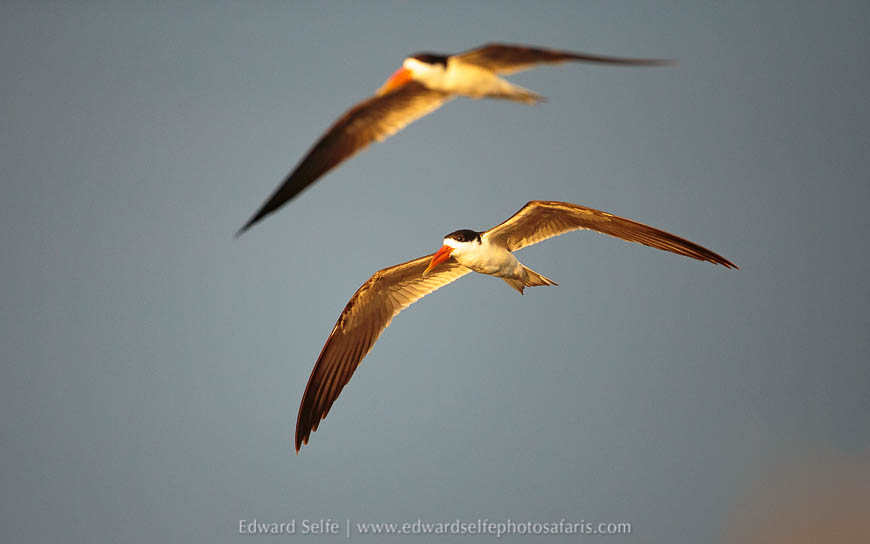
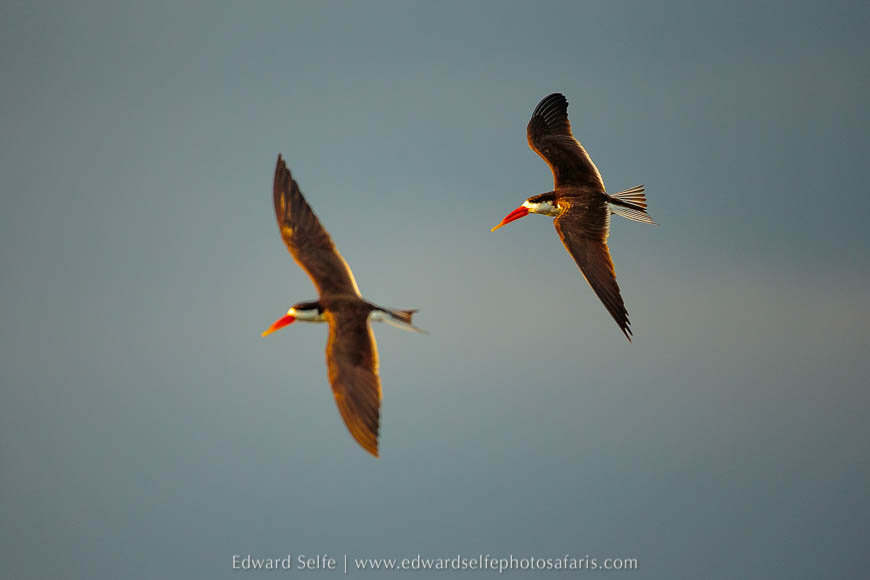
The impact of a shot of a backlit subject is highest when the subject is backlit (creating a halo) but the background behind the subject is dark. Once I had captured a number of shots with standard lighting, I switched to shooting against the light. Once again, I found a position where the birds would be backlit, but against the shadowy trees on the riverbank or the dark water below. This was an even smaller arc than before, but I watched for possible subjects and tracked them long before they came into the right zone. With the very dark background, I found that automatic AF tracking, where you set the initial point of focus and then the camera locks on to the subject and tracks it round the frame, worked best here. Knowing that the subjects would be against a dark background, I dialled in -1 on the exposure compensation scale. (Some people prefer to set the exposure for the subject and then shoot on manual so that all images have the same exposure. This is another method, but I prefer to keep my thumb on the wheel on the back of the camera and adjust the exposure up or down depending on the background. Personal preference.)

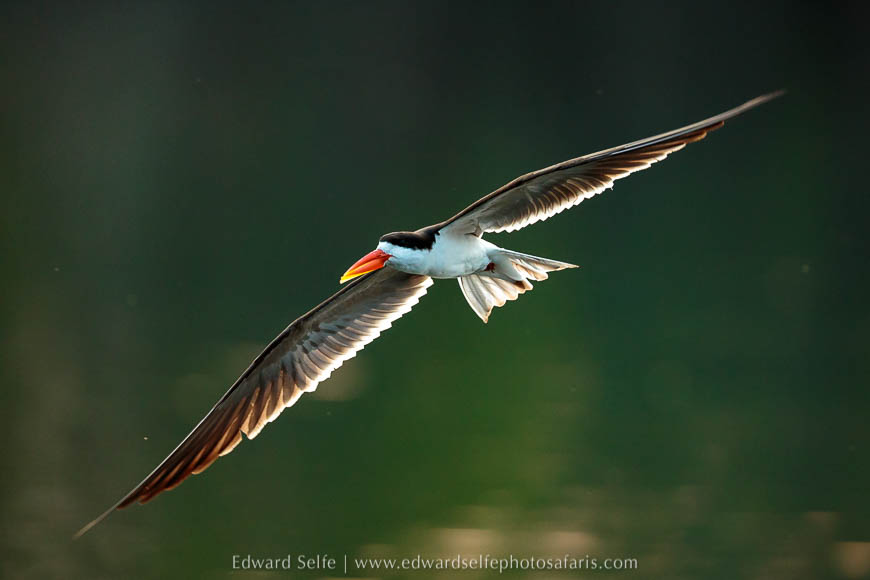

When the sun gets very low, it’s possible to shoot into it, including it in the frame, or including its reflection in the water.
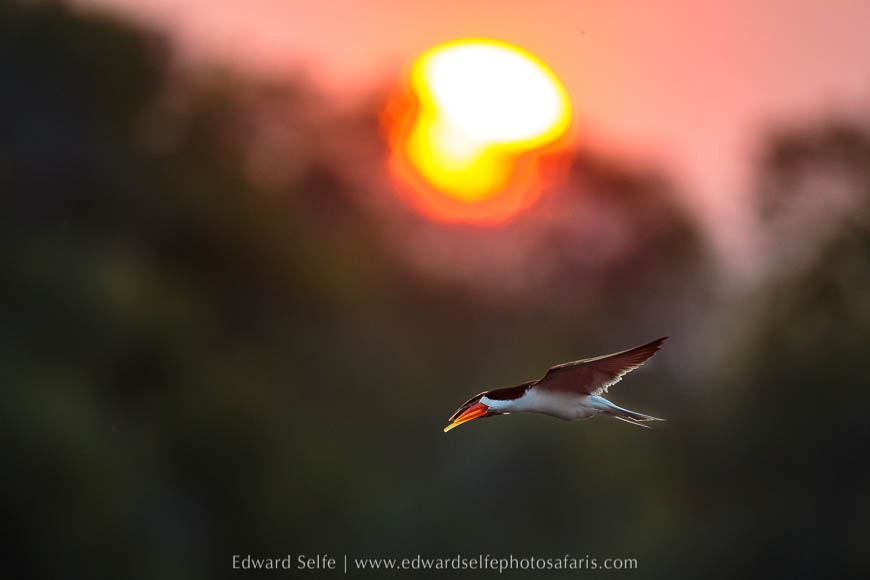
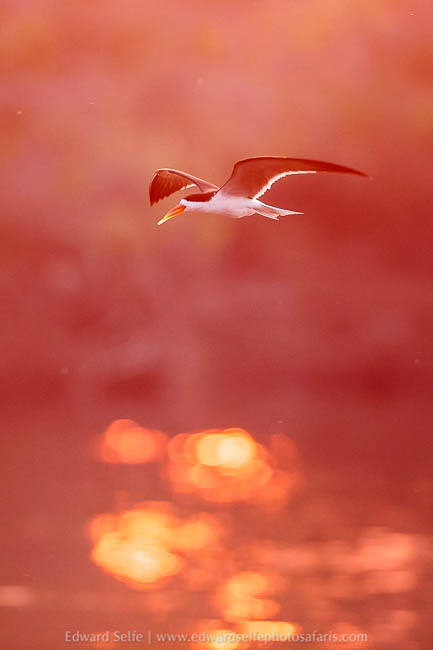
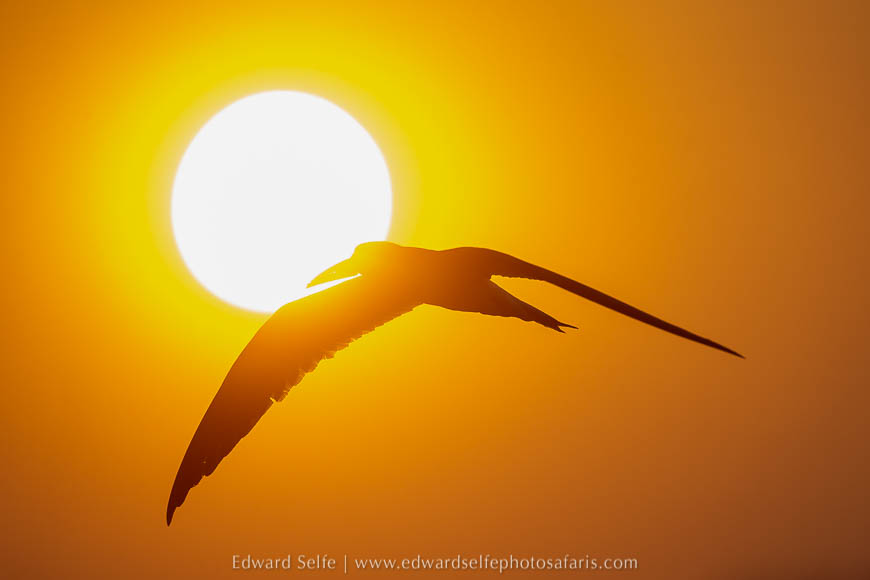
The post-sunset light can also be very useful, for a period of 20-30 minutes. You need to watch your exposure as the light drops very fast (about 1 stop every 3-4 minutes) but the soft glow is beautiful. Initially, I could still get sharp images, by using a high ISO, but soon the shutter speed sank below 1/800sec meaning that shots would be not quite sharp. So I opted to slow the shutter speed intentionally (to 1/80sec in this case) and try to capture motion blur images where the birds’ heads were sharp but the wings were blurry. Of all my wildlife motion blur attempts, I think this had the lowest hit-rate of all, but it was fun and I got a couple of images that I love!
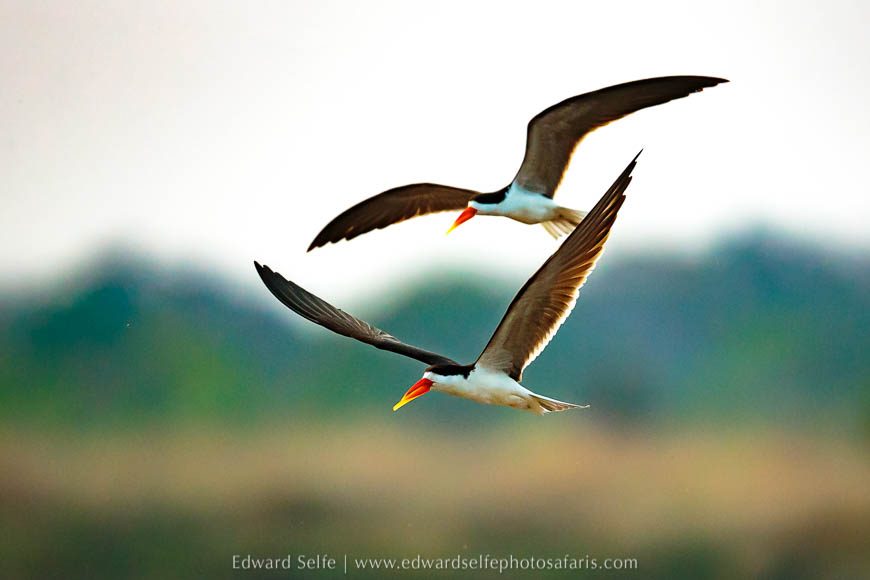
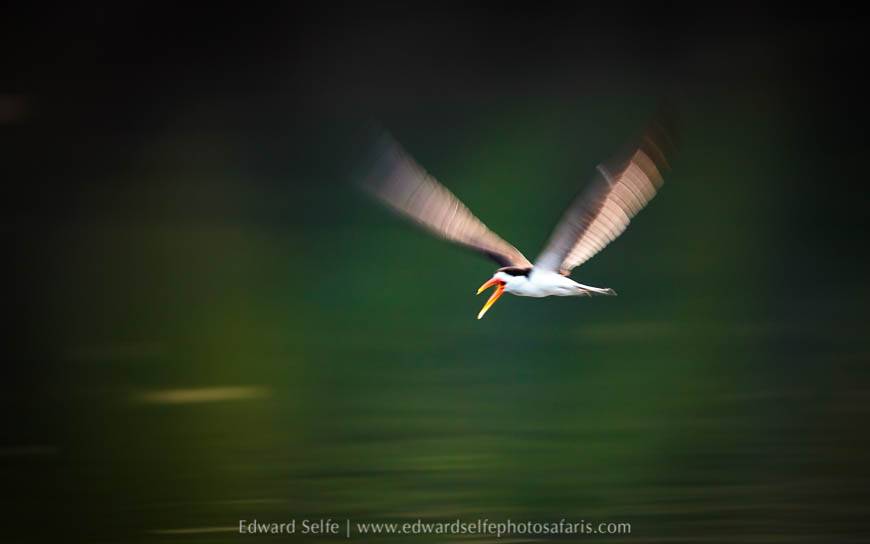
After all the trial (and some error!) I concluded that: hand-holding the camera was the best option for getting smooth panning and tracking of the birds, even if it was hard to do this for long stretches; automatic tracking focus on AI Servo/Continuous mode is most effective for birds when the background is relatively clean (or distant and therefore out of focus) and single AF point (with surrounding points as supporters) most effective with a complex background. Shutter speeds of 1/2000sec are required to freeze the motion and, even then, some movement is visible in the wingtips. Wide apertures of f4 or 5.6 are best to isolate the subject from the background, but if the background is distant, f8 gives more focus tolerance and doesn’t change the softness of the background.
Thank you for reading this summary. I hope you enjoyed the photos, and get in touch if you would like to come and photograph Skimmers with me in Kafue in October 2023!
I’ll leave you with a sunset reflection silhouette shot taken at -2 EV to enhance the colours and darken the blacks on the bird:
